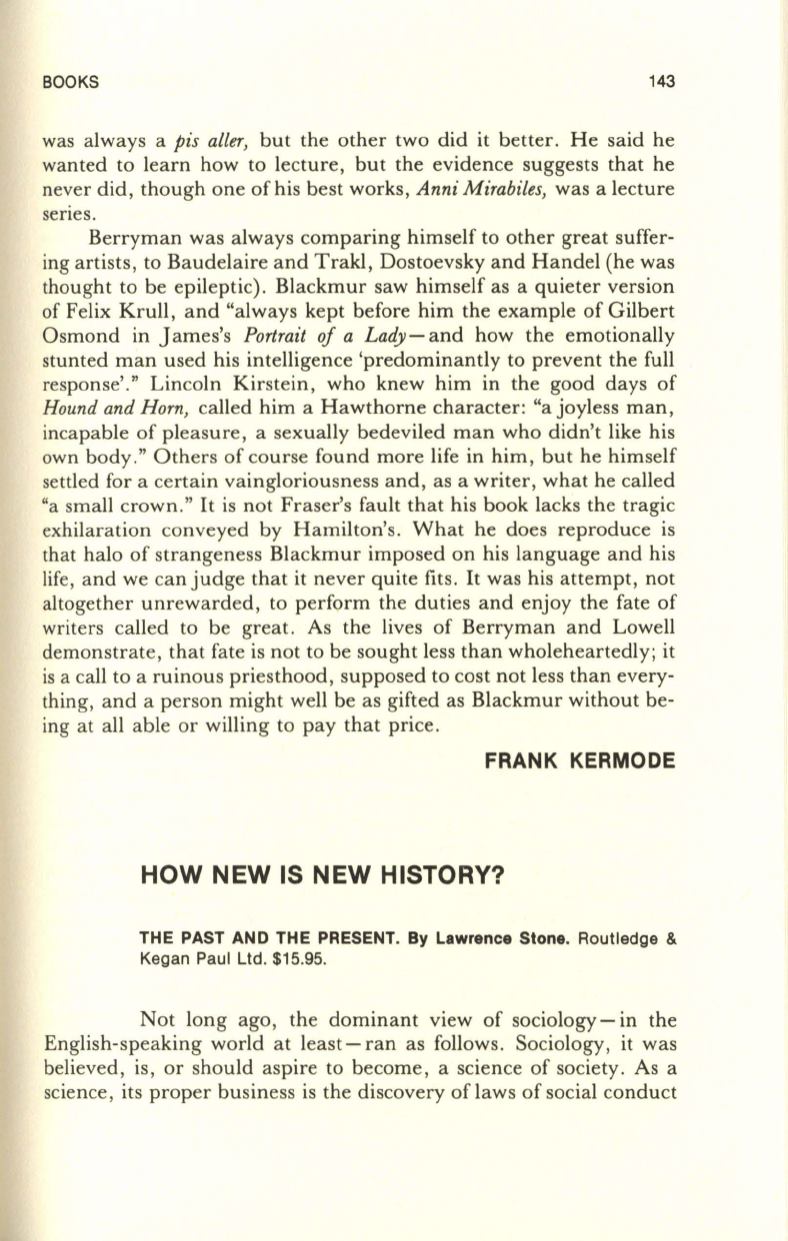
BOOKS
143
was always a
pis aller,
but the other two did it better. He said he
wanted to learn how to lecture, but the evidence suggests that he
never did, though one of his best works,
Anni Mirabiles,
was a lecture
senes.
Berryman was always comparing himself to other great suffer–
ing artists, to Baudelaire and Trakl, Dostoevsky and Handel (he was
thought to be epileptic). Blackmur saw himself as a quieter version
of Felix Krull, and "always kept before him the example of Gilbert
Osmond in
J
ames's
Portrait of a Lady
-
and how the emotionally
stunted man used his intelligence 'predominantly to prevent the full
response'." Lincoln Kirstein, who knew him in the good days of
Hound and Horn,
called him a Hawthorne character: "a joyless man,
incapable of pleasure, a sexually bedeviled man who didn't like his
own body." Others of course found more life in him, but he himself
settled for a certain vaingloriousness and, as a writer, what he called
"a small crown."
It
is not Fraser's fault that his book lacks the tragic
exhilaration conveyed by Hamilton's. What he does reproduce is
that halo of strangeness Blackmur imposed on his language and his
life, and we can judge that it never quite fits.
It
was his attempt, not
altogether unrewarded, to perform the duties and enjoy the fate of
writers called to be great. As the lives of Berryman and Lowell
demonstrate, that fate is not to be sought less than wholeheartedly; it
is a call to a ruinous priesthood, supposed to cost not less than every–
thing, and a person might well be as gifted as Blackmur without be–
ing at all able or willing to pay that price.
FRANK KERMODE
HOW NEW IS NEW HISTORY?
THE PAST AND THE PRESENT.
By
Lawrence Stone.
Routledge
&
Kegan Paul Ltd. $15.95.
Not long ago, the dominant view of sociology- in the
English-speaking world at least-ran as follows. Sociology, it was
believed, is, or should aspire to become, a science of society. As a
science, its proper business is the discovery of laws of social conduct


